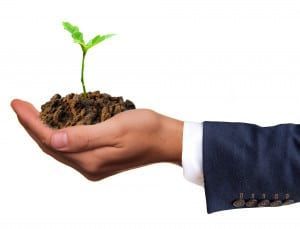Five Things You Should Do When Starting An Eco-Friendly Business

Now, more than ever, it’s important that we do all we can to keep our business practices sustainable. Eco-friendly doesn’t need to mean difficult, and luckily there are a number of unobtrusive, forward-thinking ways you can adapt your business idea to help save the planet.
- Re-evaluate your approach
So you’ve decided to take the plunge with a new business idea, read up on how to start an LLC in any state , and got your team assembled. By all accounts, you’re ready to start making the first moves towards making your dream a reality- but now’s the time to take a step back from your concept and reflect. Is this a business idea that will really help people in the long run? If your concept is one that unavoidably relies on unsustainable practices or generates a lot of waste, maybe it’s time to re-evaluate your core business idea into something more sustainable.
- Go paperless
As you find yourself starting to put your business into motion, you may find a lot of paperwork start to pile up. While it might be tempting to stick with physical copies, digitizing your records can have a huge number of benefits. Sorting and accessing your documents will become much easier, and your company’s carbon footprint will be smaller to boot. If you choose this route, it’s important to make sure that you equip your machines with top-quality data security protocols to make sure any sensitive information you have doesn’t get compromised.
- Make your business headquarters eco-friendly
If you find yourself in possession of a base of operations for your new, eco-savvy business, make sure that your sustainable ethos extends to the work area you inhabit. Invest in things like eco-friendly lighting , heating, and insulation to keep your space running as healthily as possible. Not to mention that by keeping wasteful consumption to a minimum, you’ll be saving yourself some money in the long run.
- Sustainable energy
One of the biggest crises our planet is facing right now is our wasteful expenditure of fossil fuels, causing levels of irreparable damage to our world’s ecology. Fortunately, there are a huge variety of green alternative power sources which can help to offset this impact, if even by a small amount. Consider looking into solar panels, wind energy, or tidal power as new power sources for your processes, and dealing with suppliers who specialize in them.
- Work with other eco-friendly companies
Sadly, it can be difficult trying to keep your company sustainable, which is why it’s important to collaborate with other businesses dedicated to preserving our world. For example, rather than working with a notoriously wasteful or polluting company as a supplier, consider reaching out to brands that make an effort to keep waste at a low level. Working together like this can help start to shift industry norms, and affect real change in the ways in which legislators and companies view climate change.
By making a few small changes to the way you approach your business, it can be incredibly easy to lower your emissions and cut out unnecessary and harmful waste, while also saving some money along the way.


